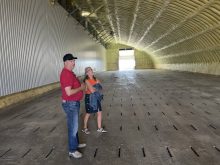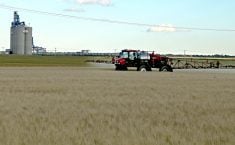An abundance of Canadian cattle heading south could lead to renewed
trade disputes with the United States, a cattle market analyst
cautioned.
Speaking at the Saskatchewan Cattle Feeders annual meeting in Saskatoon
Feb. 1, Debbie McKay-McMillin of Canfax expressed concern over a 30
percent increase in Canadian cattle moving into the U.S. in 2001. The
numbers were higher than normal due to drought, increased culling and
high feed costs.
“We have to watch that so we don’t get into a trade war there,” she
Read Also

New coal mine proposal met with old concerns
A smaller version of the previously rejected Grassy Mountain coal mine project in Crowsnest Pass is back on the table, and the Livingstone Landowners Group continues to voice concerns about the environmental risks.
said.
She encouraged producers to do what they can to keep borders open,
noting Canada exported 57 percent of its beef last year. Major markets
included the U.S., Japan and Mexico.
Producers need to be proactive and closely monitor diseases that could
have devastating consequences for the industry, McKay-McMillin said.
“We’re viewed as having a safe product,” she said. “Stay on top of any
disease problems.”
She said improved nutrition and farm efficiencies are helping Canadian
farmers produce more beef from fewer animals.
They produced about 3.4 billion pounds of beef in 2001.
Demand was up by one percent for beef, compared to a five percent
increase for poultry and pork. She said Canada’s per capita beef
consumption is not growing because the country’s ethnically diverse
population tends to eat less beef.
Markets continue to be strong for newer cuts of beef packaged for
convenience.
“People want to come home at five o’clock and not have to spend an hour
and a half in the kitchen making a meal,” she said.
The industry has maintained demand for beef through informational
campaigns that help consumers learn about various cuts and how to
prepare them. Meat labelled “grilling, stewed or simmered” make
shopping and cooking easier.
“That’s been a big success,” she said.
She anticipated the beef industry is gearing up for its expansion phase
after recent years of consolidation and shrinking, especially due to
last year’s drought. That expansion is expected to peak by 2006-07.
“If it starts to rain, we’re going to start growing,” she said, noting
producers are highly dependent on weather, particularly spring rains
this year.
















